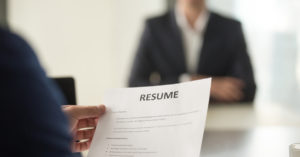You know the old adage, “Dress for the job you want, not the one you’ve got,” right?
That advice is still solid, despite a trend toward casual Friday becoming casual week, in terms of workplace dress in most offices these days.
The decline in dressing up for work is directly linked to the economy and modern, transient careers, in which younger people no longer subscribe to dated concepts in what constitutes appropriate dress. The growing numbers of self-employed freelancers who make up the gig economy further reinforce this trend when and if they enter a traditional office space.
But the idea behind the adage makes sense, even while it doesn’t require over-dressing but taking care to present yourself appropriately. If you’re job hunting, nothing makes more sense than ensuring you outshine other candidates by showing up at interviews — and at the job, if you succeed in getting hired — looking your best.
Workplace style mavens and corporate managers agree on this point: Why approach the job-seeking process with the lowest common denominator, or the least you can get away with?
Taking care with your workplace wardrobe speaks to your competence and enthusiasm, especially on the job trail. It says you don’t cut corners and you care about making a positive impression — even if you feel you’re more than qualified for the position you seek.
Research into the history of the company shouldn’t end with absorbing the expectations of the job itself, but should extend to its culture. And that includes dress codes.
Even the most casual of workplace environments have such a code, whether its specifically expressed or not. While jeans and casual shirts might be commonplace, that doesn’t mean picking them up from atop of a crumpled pile.
If the company’s brand requires its employees to dress more conventionally, it’s always wise to exceed that standard by upgrading your wardrobe. Often it’s as simple as taking care to ensure your clothes are clean, matching and make sense for the role.
However, dress codes can be confusing and deceptive. What does business casual really mean, after all? Here’s some basic rules of thumb to guide you through those codes that might set you apart from the competition and your future colleagues.
Casual: Aim higher than the pack of T-shirt-clad brigade. A crisp white Oxford, chinos and stylish-but-casual footwear sets the perfect tone.
Business casual: The most-confusing style dictate of all, since it can go either way. Meet this vagueness with a degree of confidence by paring deconstructed suits of jeans and sportscoats in colors that complement each other.
Business Professional: To meet this more formal bar while still exhibiting your personality, try mixing a sweater and more colorful socks with a suit. You’ll maintain formality while retaining your sense of personal style.
No matter how you approach your dress, nothing matters more than perception and that first impression during an interview. The extra effort will always pay off because it implies you’re trying harder than everyone else.




